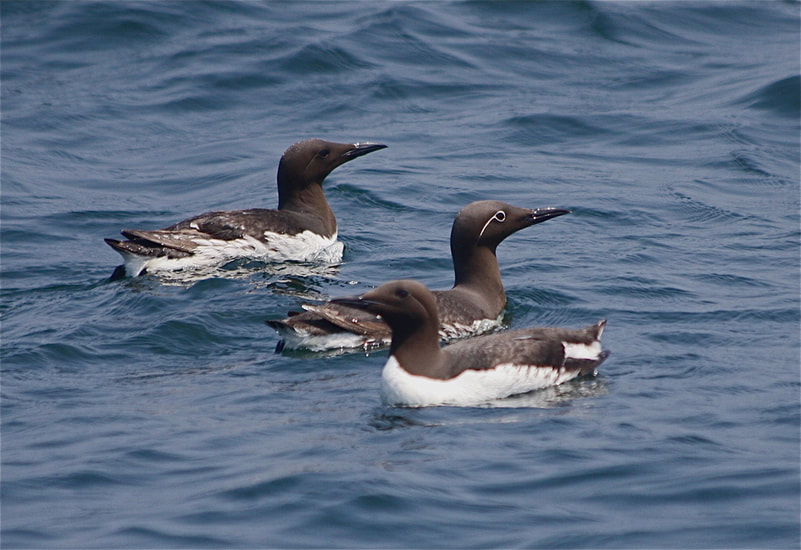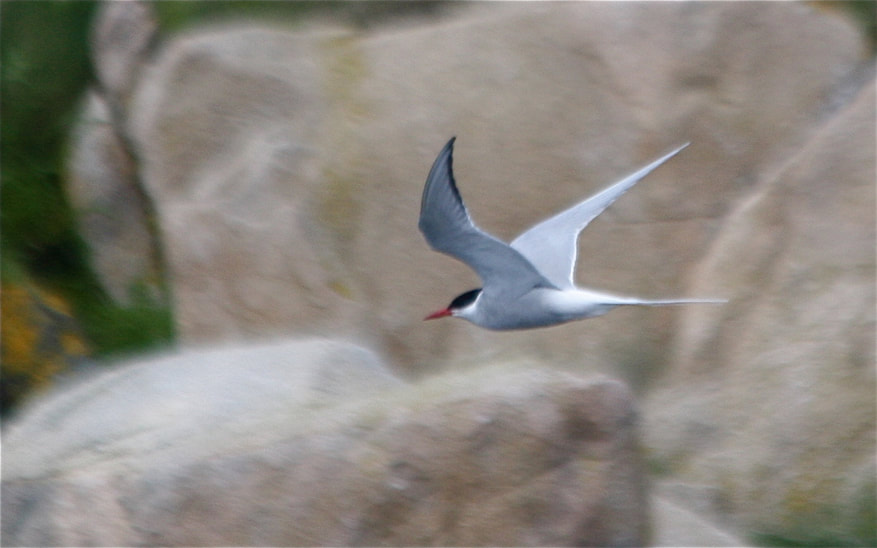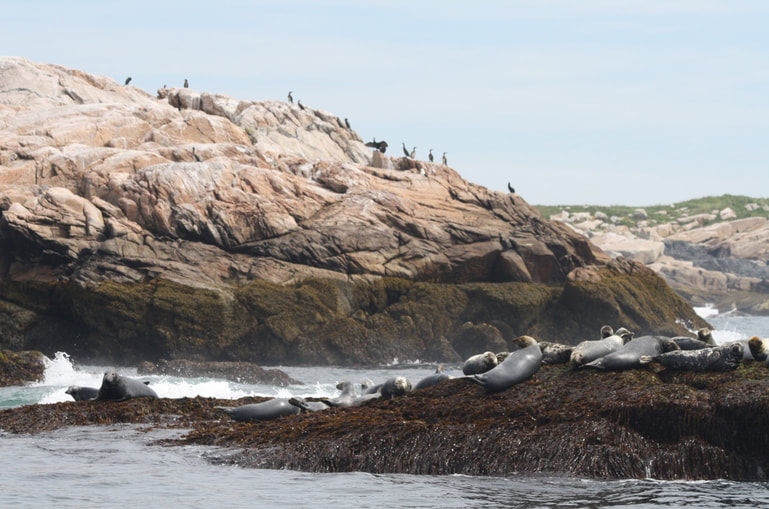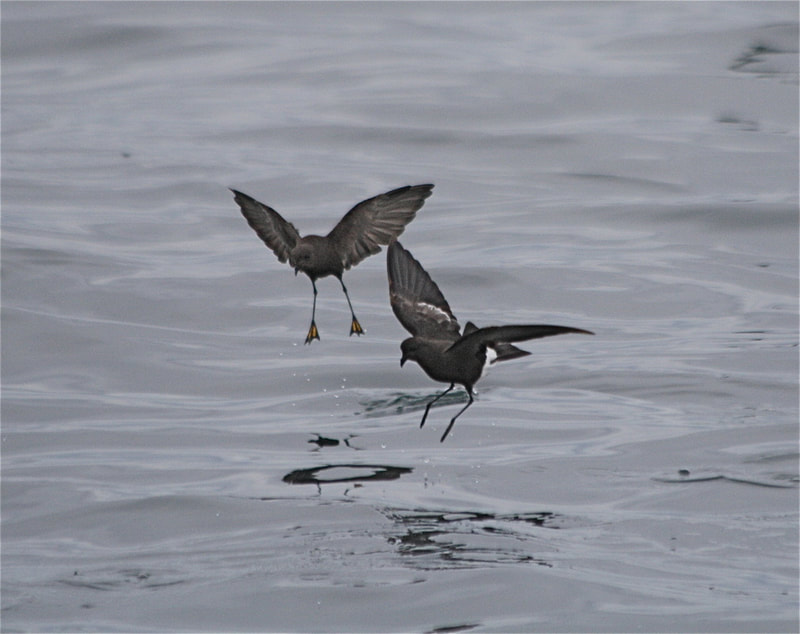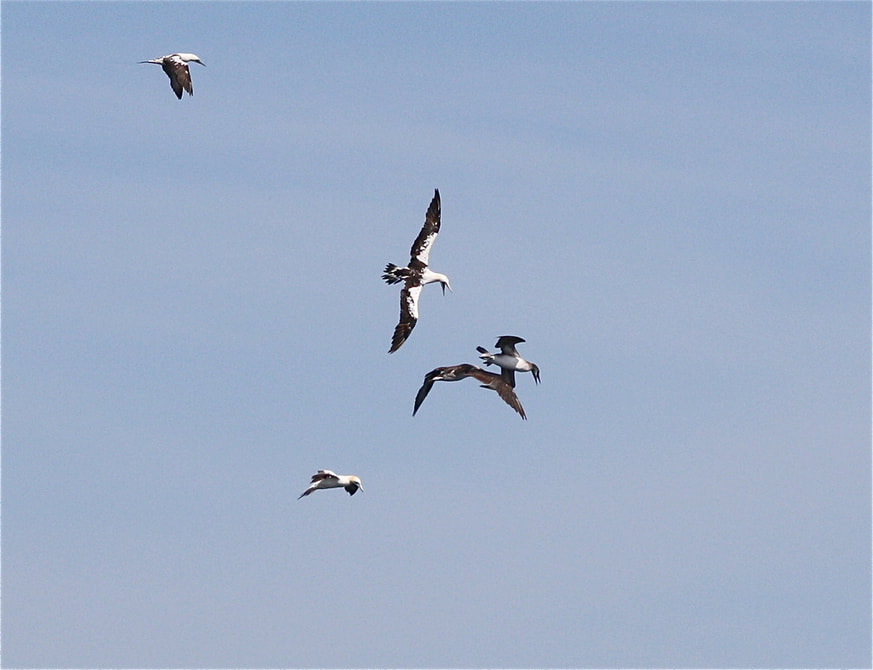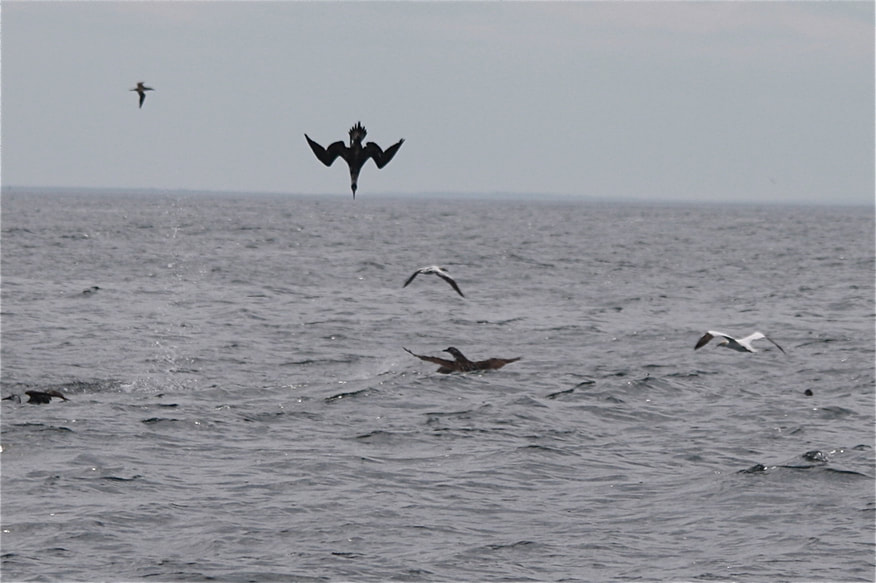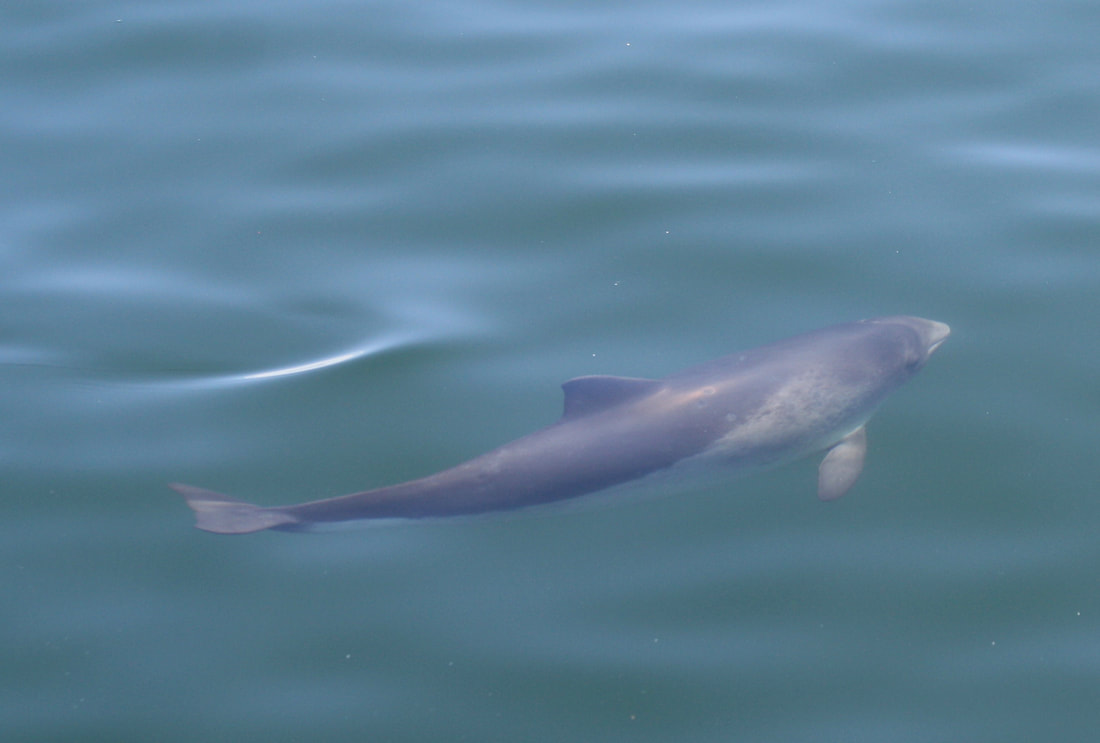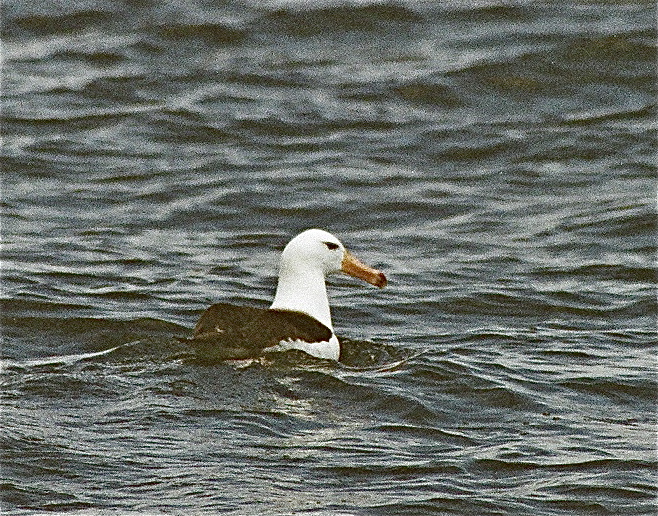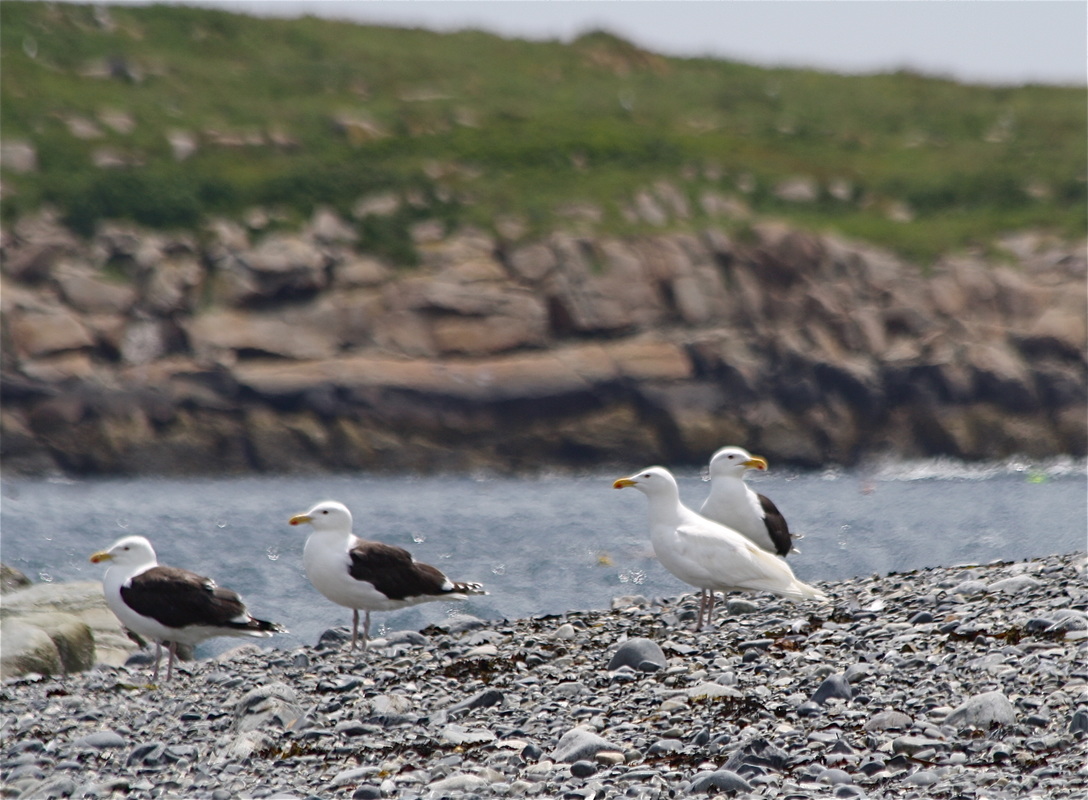Come to Vinalhaven and go for a boat ride to see some of the adjacent islands and the wildlife there, these are some rare habitats and Vinalhaven has good access to them. I take folk out on a comfortable 36' Jarvis Newman fiberglass lobster boat "Skua", powered by a 4 cylinder 115 horsepower John Deere, comfortable and efficient.
I can carry six passengers and one crew.
Seal Island National Wildlife Refuge is about an hour away and there is a lot to see there. If you are more interested in riding around Vinalhaven or Isle au Haut, Lighthouses, or something else we can customize a trip to suit your interests.
There is a lot to see in the area, the land and seascapes are inspiring, and there is a good deal of interesting wildlife that spend time here.
I charge $440 for the trip to Seal Island, or $110/ person for groups of 5 or more for the 3&1/2- 4 hour trip to Seal Island.
I have been birding in the area and involved in bird population research since 1970.
$120/ hour for other trips such as around Vinalhaven or Isle au Haut
John Drury
P.O. Box 267
Vinalhaven, ME 04863
Phone: (207) 596-1841 (Green's Island) April-November, phone service is not great on these islands, some patience may be useful
Phone: (207) 863-4962 (Vinalhaven) December- March
E-Mail: [email protected]
I have a blog of photographs taken from the boat, look for sightingsfromskua.blogspot.com
Come to Vinalhaven and go for a boat ride to see some of the adjacent islands and the wildlife there, these are some rare habitats and Vinalhaven has good access to them. I take folk out on a comfortable 36' Jarvis Newman fiberglass lobster boat "Skua", powered by a 4 cylinder 115 horsepower John Deere, comfortable and efficient.
I can carry six passengers and one crew.
Seal Island National Wildlife Refuge is about an hour away and there is a lot to see there. If you are more interested in riding around Vinalhaven or Isle au Haut, Lighthouses, or something else we can customize a trip to suit your interests.
There is a lot to see in the area, the land and seascapes are inspiring, and there is a good deal of interesting wildlife that spend time here.
I charge $440 for the trip to Seal Island, or $110/ person for groups of 5 or more for the 3&1/2- 4 hour trip to Seal Island.
I have been birding in the area and involved in bird population research since 1970.
$120/ hour for other trips such as around Vinalhaven or Isle au Haut
John Drury
P.O. Box 267
Vinalhaven, ME 04863
Phone: (207) 596-1841 (Green's Island) April-November, phone service is not great on these islands, some patience may be useful
Phone: (207) 863-4962 (Vinalhaven) December- March
E-Mail: [email protected]
I have a blog of photographs taken from the boat, look for sightingsfromskua.blogspot.com

SKUA 36' 1973 Jarvis Newman built in South West Harbor, and glass Nova Scotia dory from Wedgeport, Vinalhaven beyond.
Puffins and a Black Guillemot, we do often see 4 species of alcid on a trip to Seal Island.
Nine miles from Vinalhaven, Vinalhaven Seal Island is a great place to see, there are lots of birds there.
Razorbills along the shore of Seal Island, more and more down there each year the regional population has expanded greatly in recent decades.

The Star Fisher on back Side of Seal Island,
Razorbill, and Puffin, There were about 100 pairs off Puffin breeding off the coast of Maine in 1900, there were 1,000 pairs in 1974, the regional Puffin Population has grown to about 7,000 pairs by 2012,
Razorbill and Murre. Like Puffins and Razorbills the regional Murre population has grown dramatically during the last decades, These alcids, a family of birds rare on the east coast outside Maine, have been swelling back into the region.
The View NNE from Seal Island Isle Au Haut and Mount Desert beyond.
One out of 6 or so of these Murre are ringed, or bridled, I believe that this form is absent in the population that lives in the Pacific
When we get to Seal Island there is a lot to see.
Seal Island south east shore, looking east.
Arctic tern, there were estimated to be 850 pairs Breeding on Seal Island in '14, 1,400 pairs of Common terns as well, a good chance to see the two species close together.
Arctic tern, all these photos I took from the boat,
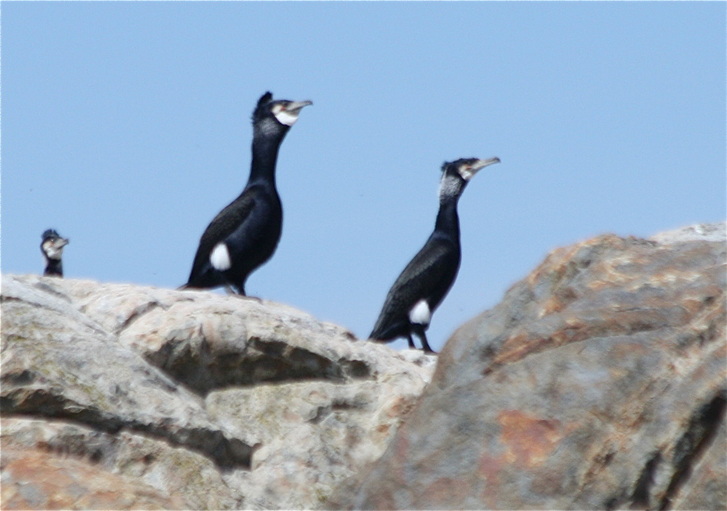
Great Cormorants in breeding plumage, stunning, a small breeding population reestablished about 1980 grew to 260 pairs in 1992 has been declining since and have been reduced to 50 pairs in the US. these are all in Midcoast Maine, the decline has been because of predation on young cormorants by eagles,
Young Bald eagle threatens last great Cormorant chicks on Little Roberts Island July 19 '13, they were gone the next day, note adjacent empty nests.
bald eagle threatening young double-crested cormorant who've scrambled to the waters edge that they might submerge, emerge and persist as they are and not as eagle fodder
As luck would have it there has been a Red-billed tropic bird who has established residence on Seal Island during late spring and summer for several years, quite a striking bird, a long way from the middle latitudes that this species and its close allies usually sail, and are named for. This individual has learned to persist here, though the tail seems a bit frivolous and unlikely for a bird from this climate.
News from seal Island the Red-billed Tropicbird is back again it was first seen May 7, 2017
last seen about August 20.
My friend Ron Joseph wrote an article about my business in Maine Boats and Harbors Magazine here is a link to it
https://maineboats.com/print/issue-155/flights-fancy
For the record I did not give this bird the nickname "Troppy" nor do I refer to him as such, that was Jenny Howard I believe.
I refer to this miraculous outlier as El Señor Tropical.
Hiram and I saw an Ancient Murrelet at Seal Island May 13, 2016, this is a wee pacific alcid most of whom nest in the Aleutian Islands I have read, a charming little fowl, it looks like an earnest aquatic quail. It was seen last Sunday May 21, 2017 at Machias Seal Island 120 miles east of here.
News from seal Island the Red-billed Tropicbird is back again it was first seen May 7, 2017
last seen about August 20.
My friend Ron Joseph wrote an article about my business in Maine Boats and Harbors Magazine here is a link to it
https://maineboats.com/print/issue-155/flights-fancy
For the record I did not give this bird the nickname "Troppy" nor do I refer to him as such, that was Jenny Howard I believe.
I refer to this miraculous outlier as El Señor Tropical.
Hiram and I saw an Ancient Murrelet at Seal Island May 13, 2016, this is a wee pacific alcid most of whom nest in the Aleutian Islands I have read, a charming little fowl, it looks like an earnest aquatic quail. It was seen last Sunday May 21, 2017 at Machias Seal Island 120 miles east of here.
,I saw this Ancient murrelet last year at Seal Island, and again yesterday May 24 2017 at Matinicus Rock, what a lovely little fowl it is.
This little murrelet flew ashore for a spell at a couple of different places .
Speaking of Unlikely, as it happens there has been an amazing unanticipated expansion of Manx shearwaters into our region as a breeding bird, it is a fairly long and interesting story, above you can see one, perhaps the founder of the colony at Matinucus Rock, roosting with laughing gulls as he has from the start, in '97, such a lovely bird. On a calm evening when several together are skating low over the water as the sun sets their elegance is nourishing.
A trio of Manx sailing around early evening at Matinicus Rock
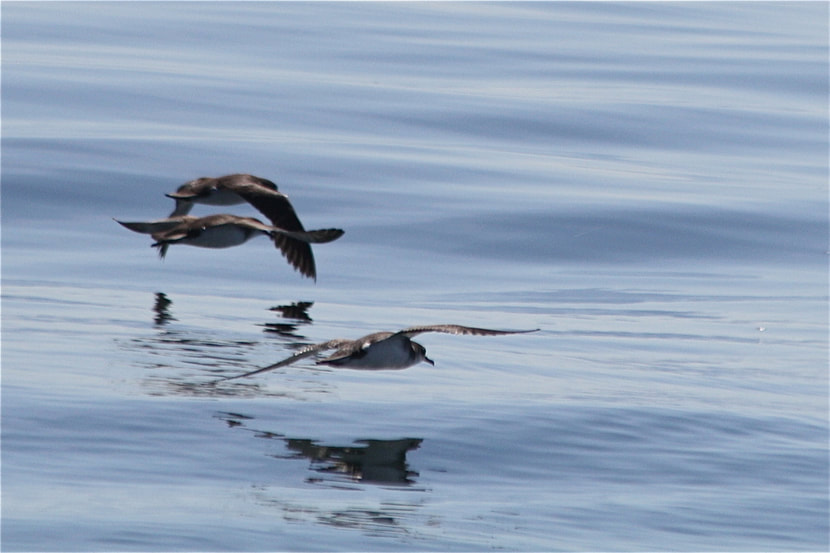
Three Manx, for their quiet elegance, this expansive species is a welcome addition here in the gulf of Maine
Grey Seals hauled out on the southwest breaker, below the cormorant colony on the Western head of Seal Island, they pup on the Island during winter thus the name.
Grey Seal pup Seal island
Often in summer the greys appear, as if born from kelp, at Squeaker Guzzle
There are Wilson's petrels in the bay more often than not
Like the shearwaters we see more of these after a SE wind,
This is a Leach's petrel, they are rarely seen in the bay though then breed on many of the Islands here, they come and go at night, this one was 20 miles offshore, they are longer winged and have a bouyant wingbeat deeper than the Wilson's, slightly forked tail, the toes stick out beyond the end of the tail on the Wilson's.
Gannets, lots pass heading east in May and early June, a few young around during early summer and lots more start showing up late July
here a few stall to start diving ,
Plunging, it is a thrill to see a bunch of them feeding
There are lots of Eagles on the Islands, Gulls and Eiders and Cormorants have been important resources for theses eagles.
many of the Eagles foraging among these seabird Islands are young ones
In recent years we have been seeing Jaegars consistently out there, here a young parasitic jaegar, (aka felonious skua), attempts herring swipe from a common tern.
Jaegars are always fun to see, powerful, agile flyers, here a black one, an appropriate color for a pirate
Young peregrine, escorted from the scene, with tern in talons
there will be loons
Sometimes there are red-throated loons in the area, April, May passing by rarely during the summer
Harbor porpoise, we see daily, though rarely this well
Maybe a Whale, here is Minke just north of Seal Island

Here is a humpback, quite rare north of Seal Island in recent decades, I have only seen two there during the last 30 years.
Minke Whale, we see these fairly frequently, they are easy to miss, they have no spout, so I likely don't see them even more frequently, when I could have.

Sabines Gull, July 7 2010, north of No Man's Land
One was also seen in early August at Matinicus Rock in 2013
Black-browed Albatross, July 15, 2009, @1mile N of Snipershan shoal
Not many Albatross get North of the equator in the Atlantic, it was @100 yards off our port beam and looked like a black-backed gull, I might have gone right by it if it had been a little further off. Makes me wonder about all the rare birds who have seen me but that I missed.
A male common eider, there are a lot less eiders in Penobscot Bay than there were 20 years ago, I believe that decline has been largely due to eagles eating ducklings, this photo was taken from shore at Matinicus Rock,
a pair of common eider, the male submerged
Bald eagle, eider duckling in toe.

Greater Shearwater, they have been rather scarce in the bay these last summers of great weather. They are more likely in the bay after SE winds, if you go a few miles beyond Seal Island they are usually out there.
Sooty shearwater, they glide low over the water with stiff shallow wingbeats, surfing along the wind.
There has been a white Black-back in the area for several years,
Leucism, rather than albinism, a striking bird either way.
White-sided dolphins passing Matinicus rock, September 8, '15
Breaching White-sided Dolphin,
they seem to be enjoying themselves.






